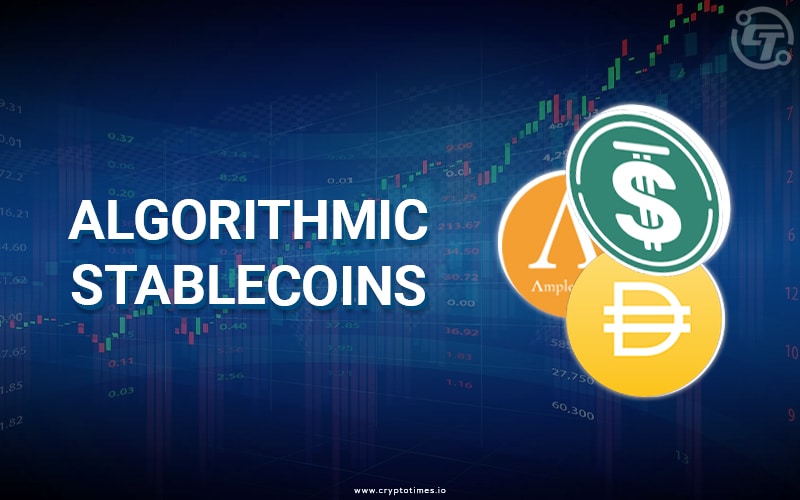It’s always about what’s next in DeFi. But, who knows?! In the case of stablecoins, what comes next appears to be algorithmic stablecoins. The recent peg break of Terra’s UST has also forced us to highlight the risks involved with algorithmic stablecoins. We’ll get into all of this in a minute.
We think algorithmic stablecoins attract two types of people:
- Those interested in bootstrapping a censorship-resistant stablecoin and
- Those financially incentivized by the reward of holding a token that rewards you with compounding daily returns whenever it surpasses the dollar peg.
Algorithmic Stablecoins: What Are They?
First, consider a stablecoin analogy. Consider how difficult it is to use bitcoin or any other cryptocurrency in everyday transactions when it is worth X one day and a half of that the next. Consider what it’s like to be the guy who bought two pizzas for 10,000 bitcoins years ago. That’s where stablecoins come in.
Simply put, stablecoins are an attempt to create a cryptocurrency that is not volatile. The value of a stablecoin is tied to a fiat currency in the real world.
Tether (USDT) or MakerDAO’s DAI, for example, is worth one dollar and is expected to remain (or around 1 USD) that way, no matter what.
While fiat-backed stablecoins store their value in fiat currencies like the US dollar or the Euro, there can also be fully decentralized stablecoins that maintain a 1:1 peg with crypto assets as debt collateral.
As the name suggests, algorithmic stablecoins rely on market incentives that are controlled by algorithms. Algorithmic stablecoin protocols like Terra are designed to restore the native token (UST) to one dollar while the market cap grows because of demand. They are classified as “non-collateralized stablecoins”.
So, anything other than the expectation that their value will remain stable does not back these stablecoins.
Well, how do algorithmic stablecoins maintain their stability? An algorithmic stablecoin’s protocol attempts to act as a central bank by changing the number of tokens in circulation in response to changes in their value.
What Can Go Wrong With Algorithmic Stablecoins?
The risks associated with algorithmic stablecoins are ingrained features, so let us use TerraUSD (UST) as an example and highlight the aforementioned risks.
- Its value is based on the promise of future growth.
The most volatile stablecoins are algorithmic in nature because they are not fully collateralized and rely on market incentives, arbitrage opportunities, and reserve token adjustments to maintain a stable peg.
Although it may be minted at a set exchange rate regardless of market conditions, LUNA works as a volatility absorber for TerraUSD (UST). However, unlike USDT, the mechanism is difficult because UST does not have fiat reserves.
TerraUSD (UST) is a non-collateralized algorithmic stablecoin that is decentralized. The major difficulty with such a multi-token stablecoin is the reliance on a basic level of support, as LUNA’s value is solely determined in the secondary DeFi market.
- Broken pegs occur because of dependence on market conditions.
Algorithmic stablecoins, as defined by Terra Protocol, maintain their price peg through a set of rules or software rather than an underlying asset. The algorithm’s rules for such actions are available in embedded smart contracts. Only governance votes associated with governance or seigniorage tokens can change the rules.
The dilemma with internal governance tokens like LUNA is that LUNA and UST have an unfair competitive advantage. An investor might acquire UST on the secondary market and redeem it for $1 of LUNA if it loses its peg and goes below $1.
Market discipline can fail when it is most required, despite the fact that it aims for perfection.
This might conclude in a death spiral, similar to what happened with TerraUSD, with a net impact of a flood of LUNA supply, leading additional UST to be removed from the market.
The “de-peg” was precipitated by a big LUNA drop and certain whale holders selling UST short, resulting in a liquidation cascade.
- During panic, algorithmic stablecoins are nuanced & demand is volatile
Consistently contracting the money supply while maintaining stability is extremely difficult, and participants must believe that demand will rise in the future. If the demand falls, the stablecoin cannot maintain its peg.
While the value falling below the peg is a more common issue for algorithmic stablecoins, market anxiety can become market euphoria if investors lose faith in the stablecoin.
And for its numerous applications within the Terra economy, Terra stablecoins are more stable than DeFi speculation. The global crypto market suffered when one crypto wallet dumped $84 million worth of TeraUSD (UST) on Ethereum and $108 million on Binance’s exchange.
So it appeared to be a domino effect that if algorithmic stablecoins with no real collateral or government guarantee were attacked, the entire DeFi financial ecosystem could be affected.
- Algorithmic stablecoin protocols use a constitutionally centralized governance model.
A DAO structure is in charge of constantly approving enhancement suggestions in algorithmic stablecoin protocols. It’s critical to have a fair token distribution while simultaneously granting enough governance privileges to all stakeholders.
It is theoretically workable to adjust the stablecoin supply and the remuneration algorithm by changing a smart contract. However, it would force users to consider the consequences of various options and come to a consensus. This indeed has been something that has proven challenging even for far simpler considerations, like governing unrestricted DLT networks.
Governance restoration remains a critical issue following the black swan event. To preserve the Terra ecosystem, Do Kwon has proposed the reconstitution of the community and governance structure, as well as a community pool to fund future development, after validator groups discussed the possibility of forking the Terra chain.







